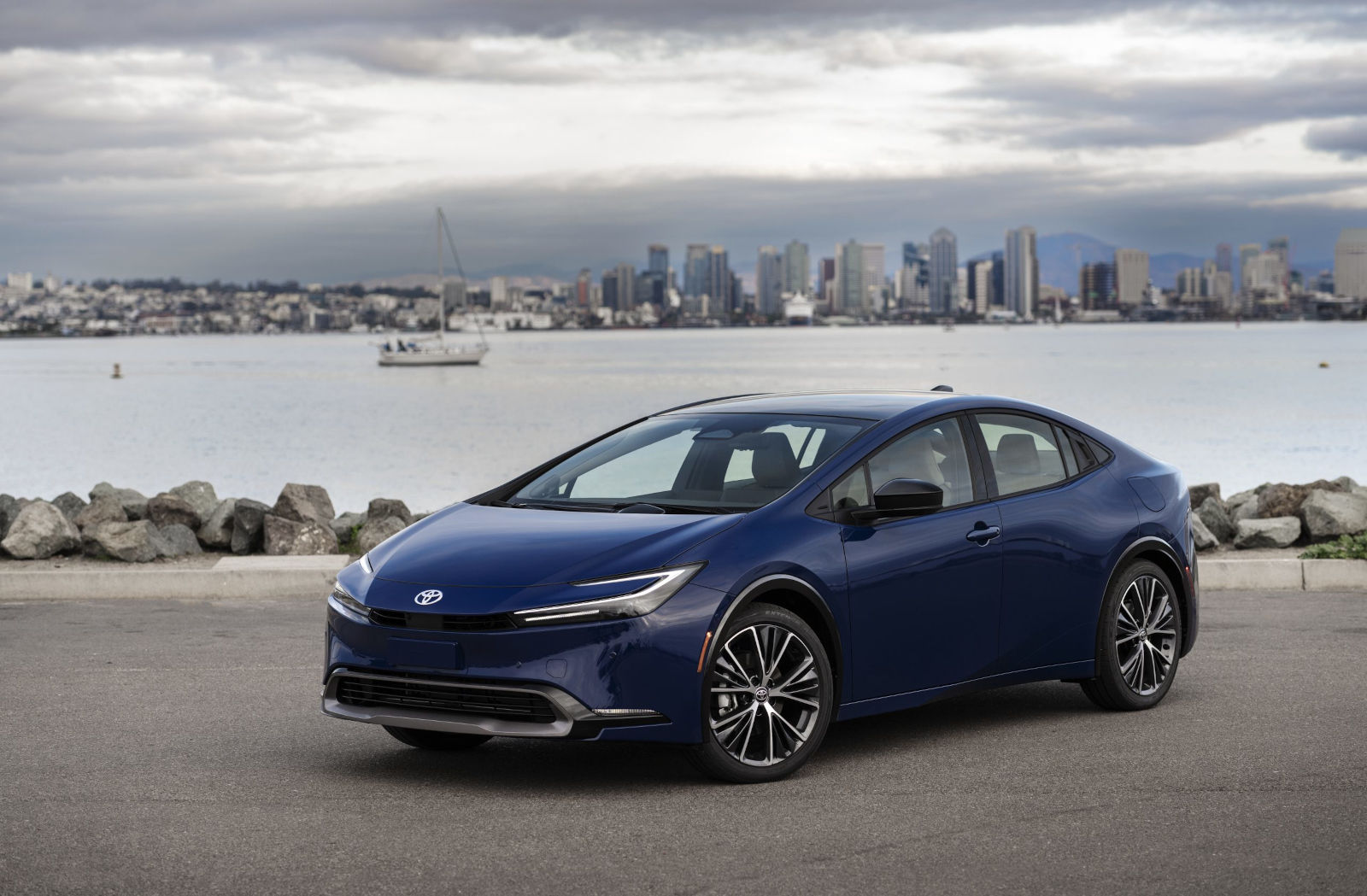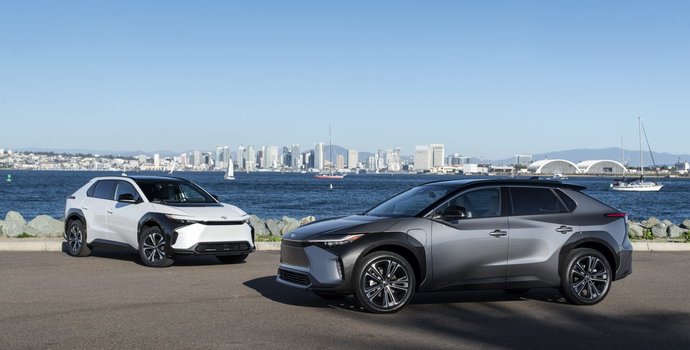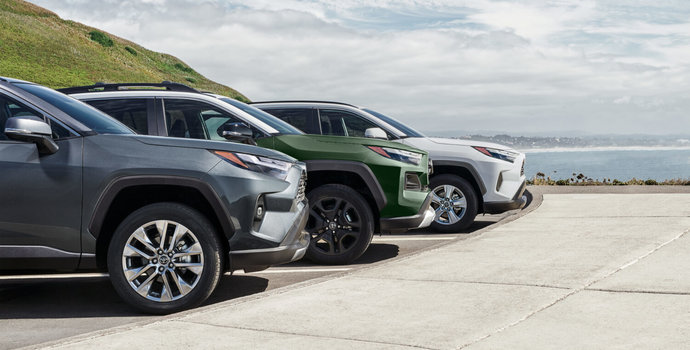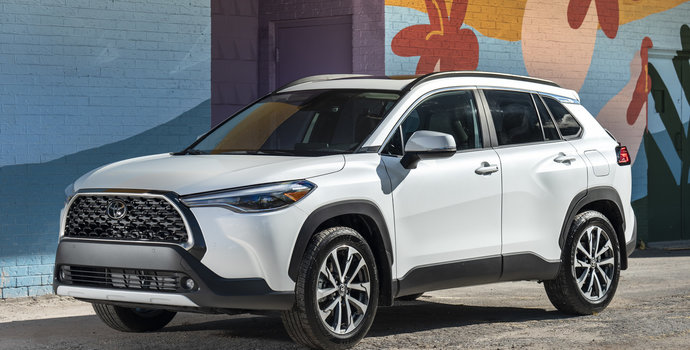The 2024 Toyota Prius and Prius Prime represent the evolution of hybrid technology, building on Toyota’s legacy of innovation and sustainability. Both models offer distinct advantages, but they cater to different needs depending on whether the priority is plug-in capability, overall performance, or an accessible hybrid driving experience. Below, we compare these two vehicles across key categories, diving into their engine types, performance, efficiency and electric capability, charging features, safety and connectivity, and interior and cargo space.
Engine Type and Performance
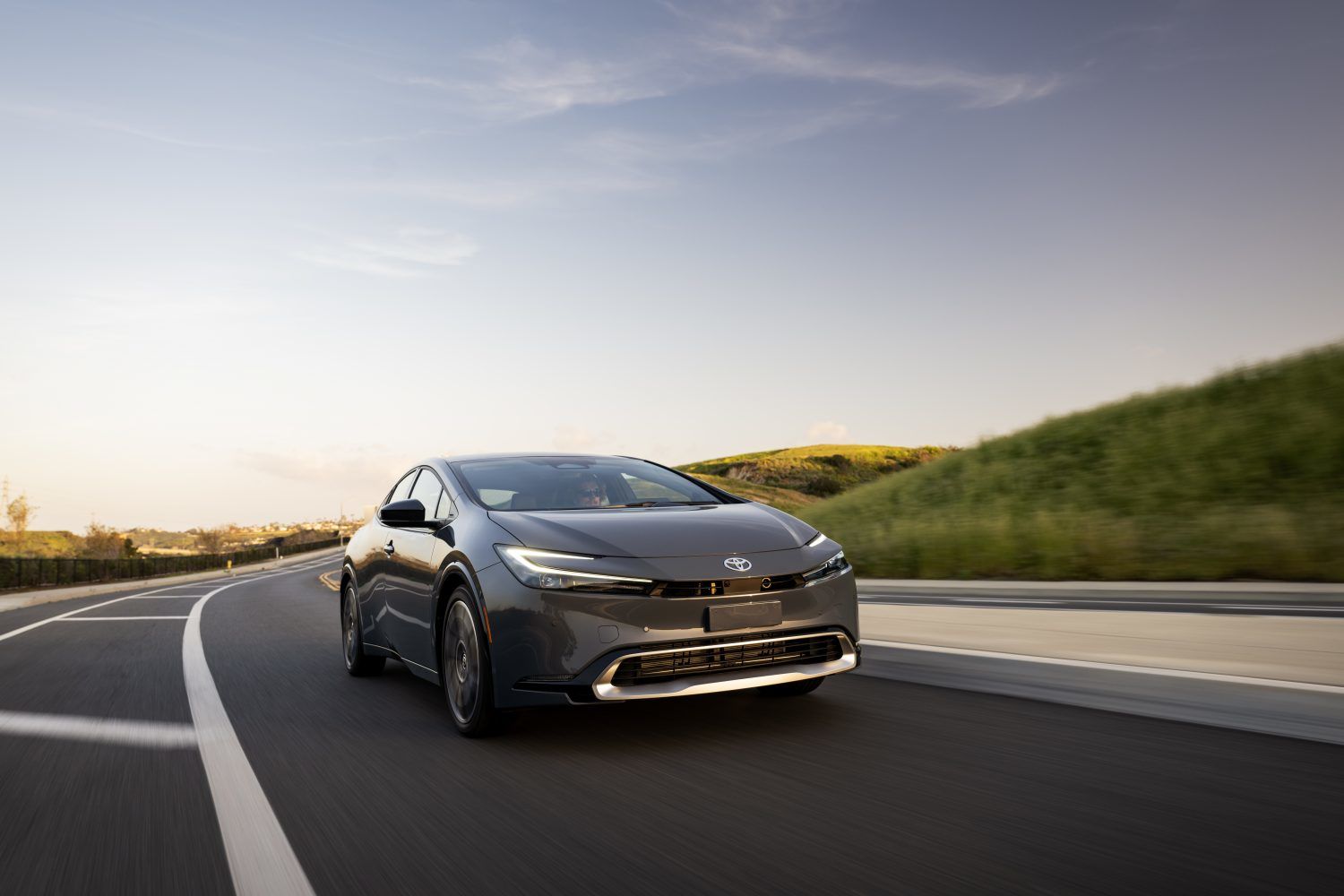
The 2024 Toyota Prius is equipped with a 2.0L Atkinson Cycle four-cylinder engine paired with a motor-generator system, delivering a total of 196 horsepower. This combination is mated to an electronically controlled continuously variable transmission (eCVT) and an electronic on-demand all-wheel-drive (AWD) system, which drives the rear wheels when additional traction is needed. The AWD system offers stability and confidence in varying road conditions, making it a practical choice for Canadian drivers dealing with harsh winters.
On the other hand, the 2024 Toyota Prius Prime takes a slightly different approach. This plug-in hybrid is powered by the same 2.0L engine but integrates a larger electric motor-generator system, resulting in a total system output of 220 horsepower—24 more than the standard Prius. This extra power is immediately noticeable, particularly during acceleration, giving the Prime a more responsive and dynamic driving experience. Unlike the Prius, the Prius Prime is front-wheel-drive only, focusing on maximizing electric efficiency rather than all-weather capability.
The Prius’s 0-100 km/h time of 7.2 seconds is respectable for a hybrid vehicle, balancing efficiency with decent performance. However, the Prius Prime’s added horsepower and torque deliver an even quicker acceleration, appealing to those who desire more spirited driving in a hybrid package. The Prime’s powertrain is built to handle both electric-only and hybrid driving seamlessly, ensuring smooth transitions between the two modes.
Efficiency and Electric Capability
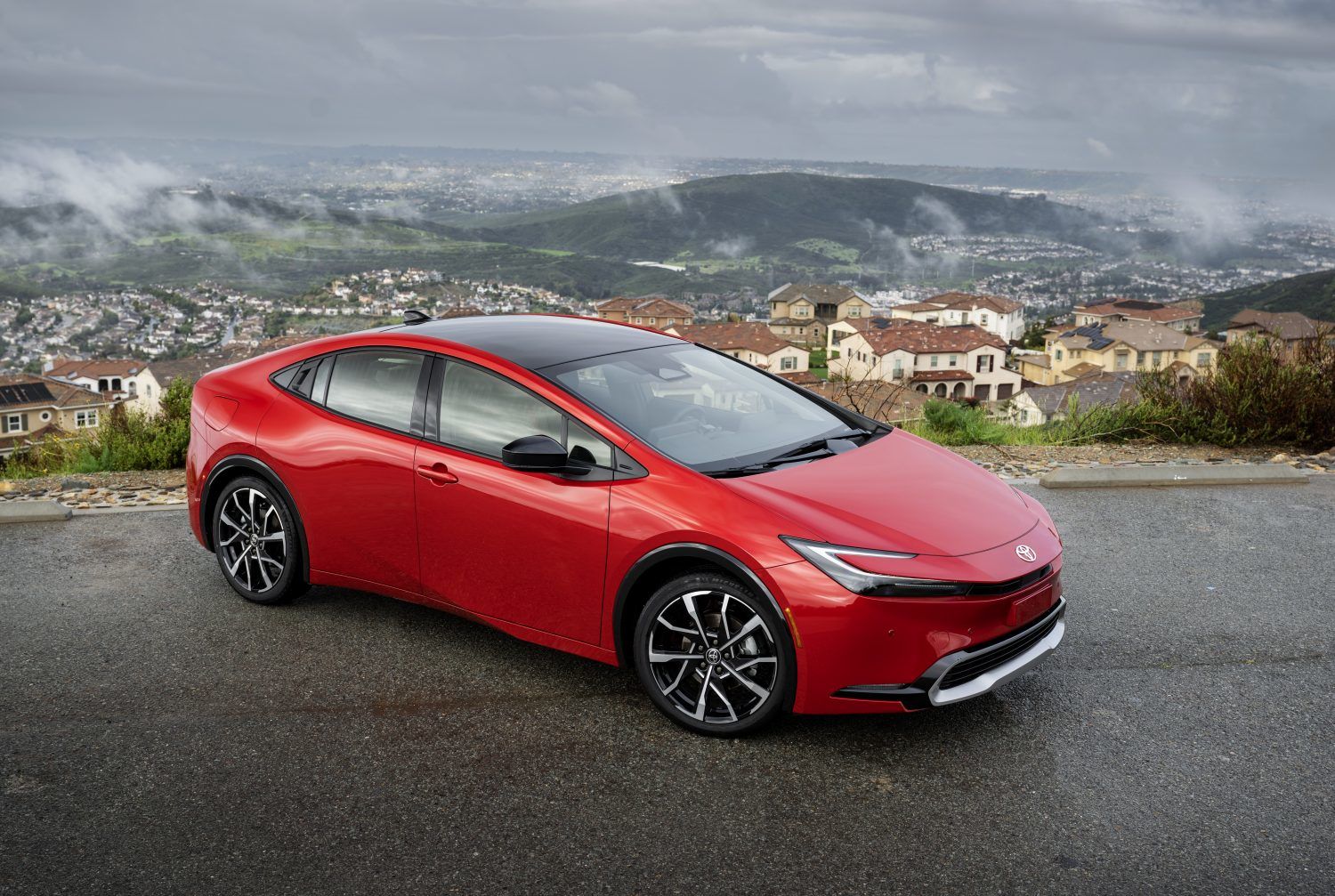
The 2024 Toyota Prius is a classic hybrid, designed for those who prioritize fuel efficiency without needing to worry about charging. With a combined fuel consumption rating of 4.8 L/100 km, it’s among the most efficient hybrids available, making it ideal for those looking to save on fuel costs. The hybrid system’s self-charging capability means there’s no need to plug in—simply drive, and the battery will recharge itself through regenerative braking and the gasoline engine.
For those seeking more electric driving capability, the 2024 Toyota Prius Prime is the better choice. The Prime offers an all-electric range of up to 72 kilometres on a full charge, which covers the daily commuting needs of many drivers. This electric-only range is a significant benefit for those who want to reduce their reliance on gasoline, particularly in urban environments. When the electric range is depleted, the Prime seamlessly switches to its hybrid mode, achieving a combined fuel consumption as low as 1.8 Le/100 km. This versatility makes the Prius Prime a compelling option for drivers who want the best of both worlds—electric efficiency without range anxiety.
Charging Features
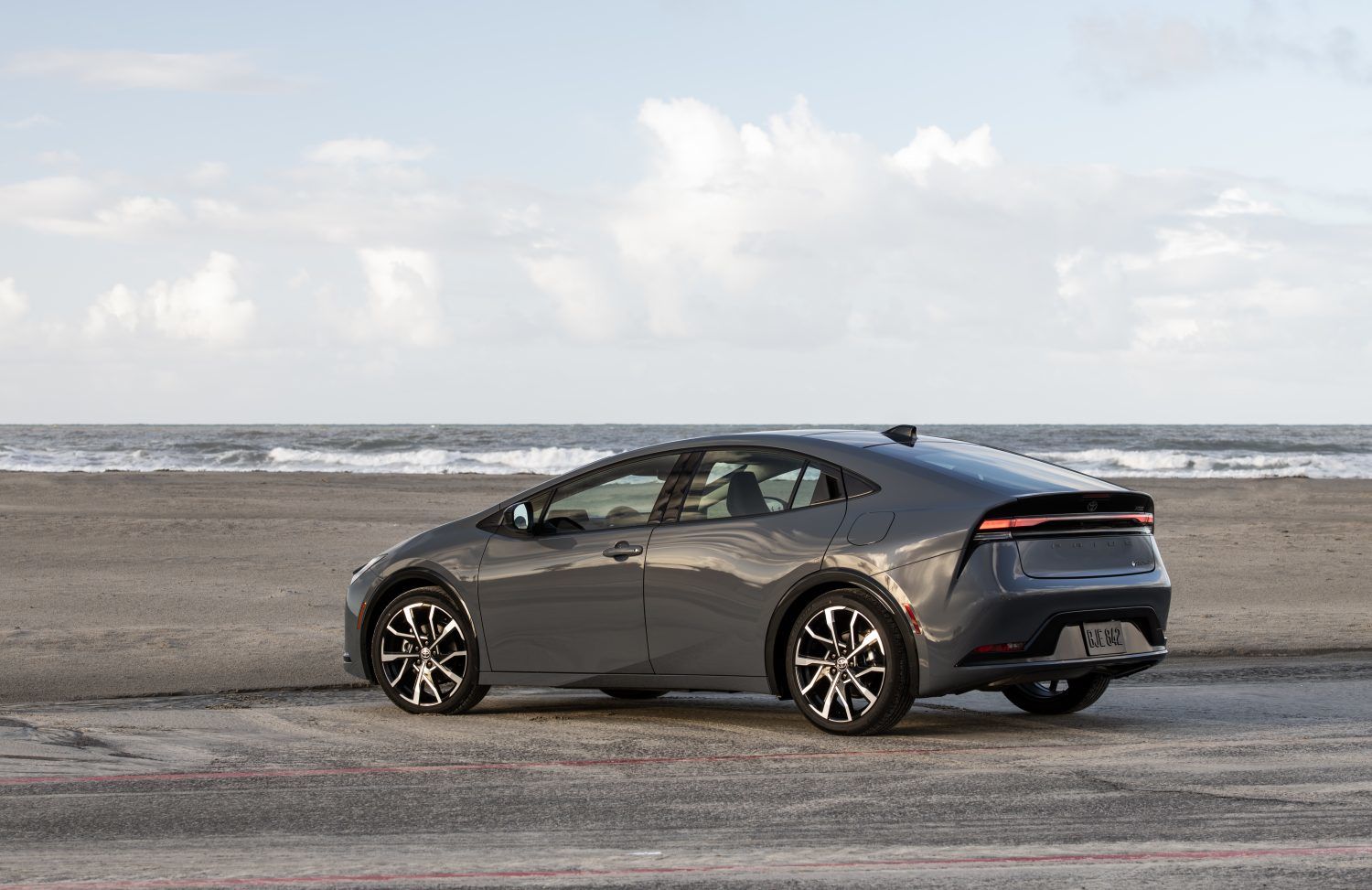
The key difference between these two models lies in their charging capabilities. The standard Prius does not require external charging, as it operates solely as a self-charging hybrid. This simplicity is appealing to those who want a hassle-free hybrid experience without needing to worry about plugging in their vehicle.
In contrast, the Prius Prime requires charging to take full advantage of its electric range. It can be fully recharged in as little as four hours using a Level 2 charger, allowing drivers to maximize their electric-only driving. For those who have access to charging stations at home or work, the Prime’s plug-in capability offers the opportunity to drive on electric power alone for short commutes or errands, significantly reducing fuel consumption.
Safety and Connectivity
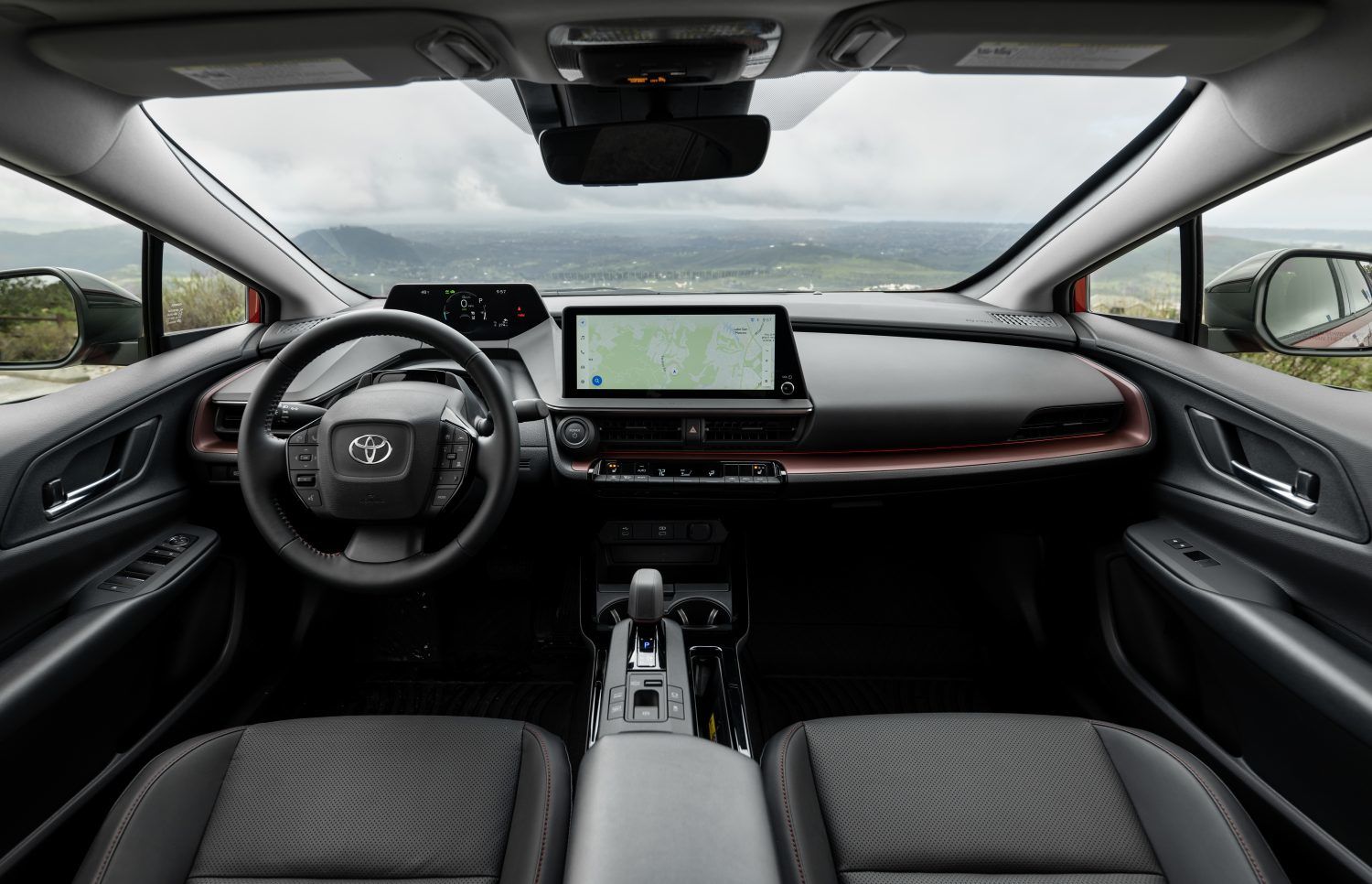
Both the 2024 Toyota Prius and Prius Prime come equipped with Toyota Safety Sense 3.0, the latest iteration of Toyota’s suite of advanced safety features. This includes pre-collision systems with pedestrian detection, lane departure alerts with steering assist, and full-speed dynamic radar cruise control. The safety suite is complemented by additional technologies like the Blind Spot Monitor with Safe Exit Assist and eight airbags, providing comprehensive protection for both models.
While the safety features are largely similar, the Prius Prime takes it a step further with additional technologies such as Front Cross Traffic Alert and Lane Change Assist. These features enhance driver awareness in complex driving scenarios, making the Prime particularly suited for urban environments where quick reactions and situational awareness are key.
On the connectivity front, both models feature the Toyota Multimedia system, which integrates wirelessly with Apple CarPlay and Android Auto. The system’s interface is intuitive, allowing drivers to interact with their vehicle using familiar smartphone gestures on the touchscreen. Voice commands are also enhanced, enabling easy access to navigation, music, and other features without taking your hands off the wheel.
Interior and Cargo Space
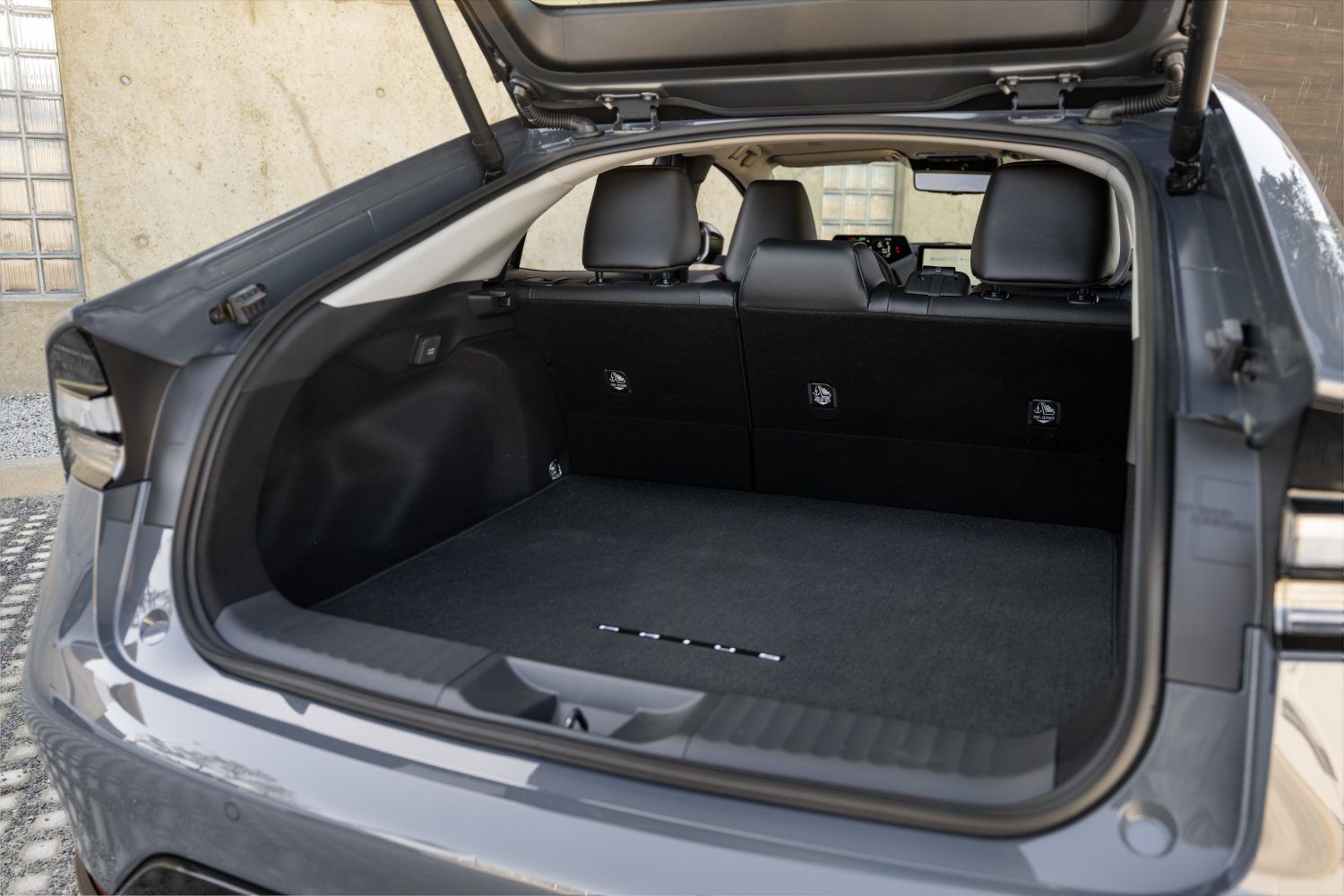
When stepping inside either the Prius or Prius Prime, drivers and passengers are greeted with a modern, tech-centric cabin. Both models offer seating for five, with driver-centric controls and soft-touch materials enhancing the overall comfort. The interior design is sleek and minimalist, emphasizing the futuristic aesthetic that has become a hallmark of the Prius lineup.
However, there are subtle differences in interior dimensions that could influence your choice. The Prius Prime offers slightly more rear legroom at 912 mm compared to the Prius’s 884 mm, making it a bit more accommodating for rear passengers, especially on longer trips. Both models feature similar headroom and shoulder room, ensuring that passengers remain comfortable regardless of where they are seated.
Cargo space is another area where the Prime holds an advantage. With the rear seats up, both models provide 575 litres of cargo space. However, when the rear seats are folded down, the Prius Prime offers up to 756 litres, which is more than the standard Prius. This extra capacity makes the Prime more versatile for those who frequently need additional storage for larger items like sports equipment or travel luggage.
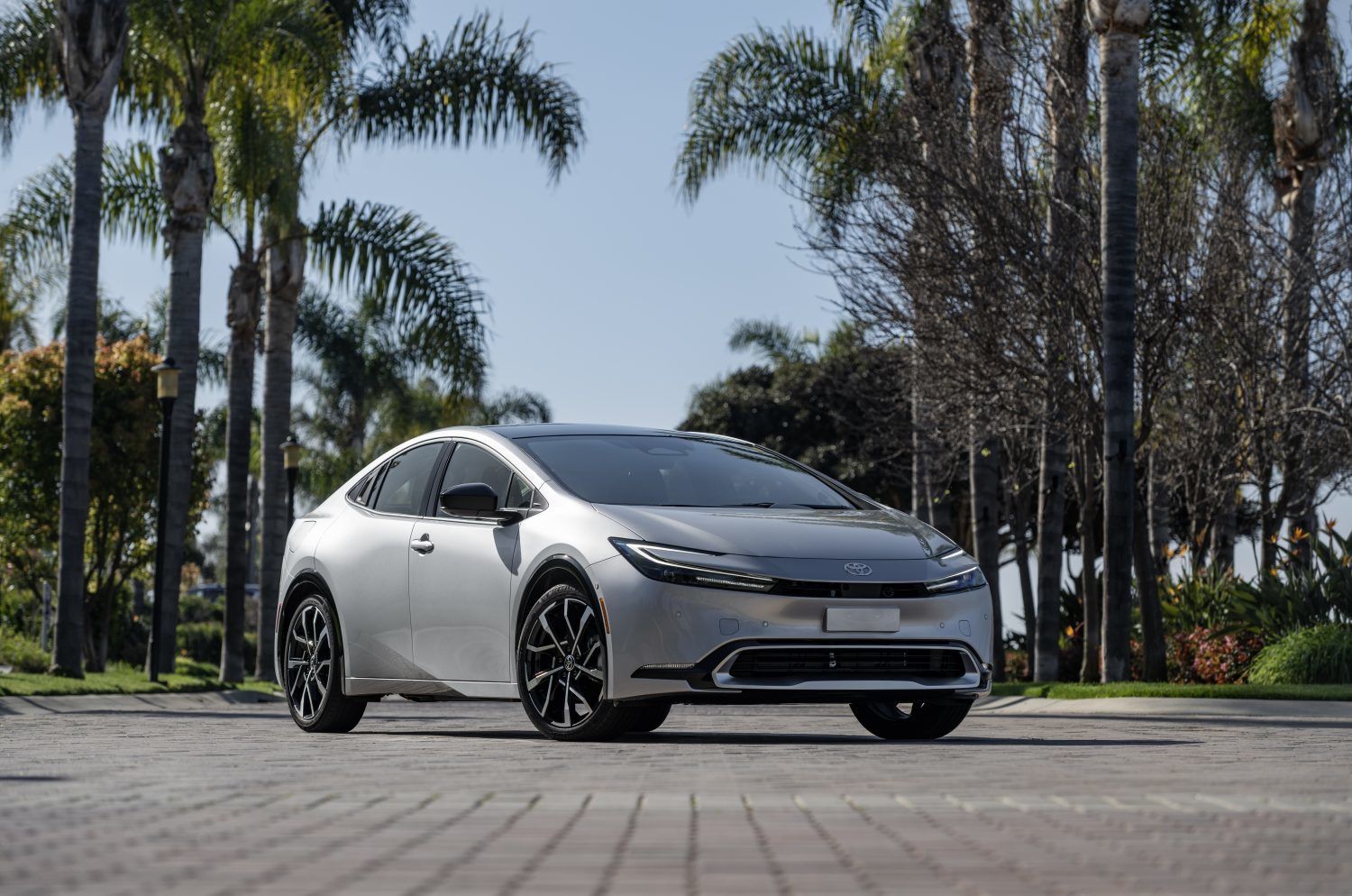
|
Specification
|
2024 Toyota Prius
|
2024 Toyota Prius Prime
|
|
Starting MSRP
|
$37,150
|
$39,050
|
|
Engine Type
|
2.0L Atkinson Cycle 4-cylinder
|
2.0L Atkinson Cycle 4-cylinder
|
|
Electric Motor Output
|
Motor-generator system
|
161 horsepower electric motor
|
|
Total System Horsepower
|
196 hp
|
220 hp
|
|
Drivetrain
|
All-Wheel Drive (AWD)
|
Front-Wheel Drive (FWD)
|
|
Electric-Only Range
|
N/A
|
Up to 72 km
|
|
Combined Fuel Efficiency (Hybrid Mode)
|
4.8 L/100 km
|
1.8 Le/100 km
|
|
Charging Time (Level 2)
|
N/A
|
As little as 4 hours
|
|
Front Headroom
|
965 mm
|
953 mm
|
|
Front Legroom
|
1,097 mm
|
1,077 mm
|
|
Rear Legroom
|
884 mm
|
912 mm
|
|
Cargo Space (Rear Seats Up)
|
575 L
|
575 L
|
|
Cargo Space (Rear Seats Down)
|
N/A
|
756 L
|
Conclusion
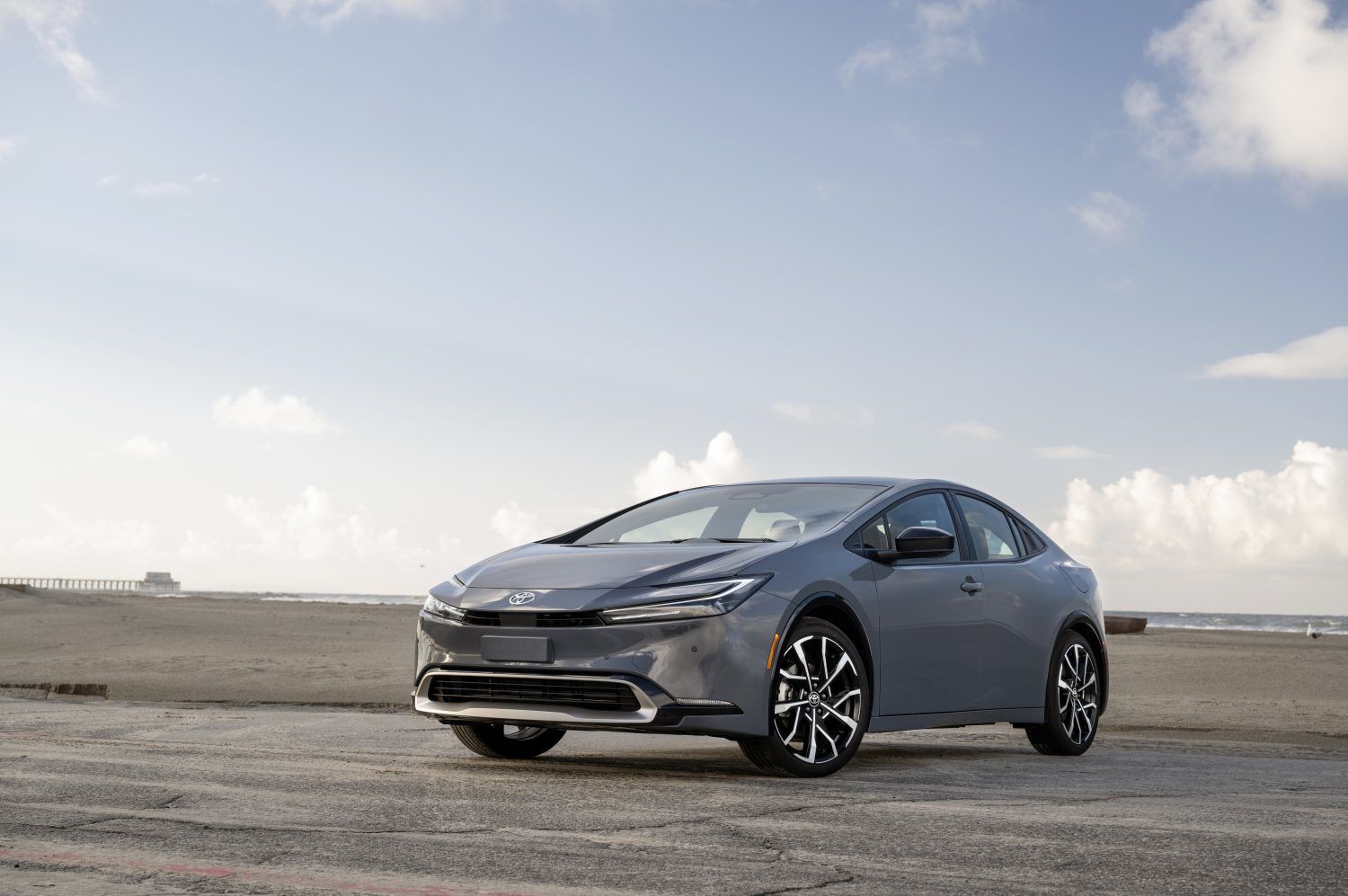
The 2024 Toyota Prius and Prius Prime each offer unique strengths, catering to different driver preferences and needs. The standard Prius is ideal for those seeking a reliable, efficient hybrid with the added benefit of all-wheel-drive for all-weather confidence. Its simplicity and self-charging capability make it an attractive choice for drivers who want a no-fuss hybrid experience.
On the other hand, the Prius Prime is for those who prioritize electric driving and want the flexibility of a plug-in hybrid. With its extended electric range, faster acceleration, and more advanced safety features, the Prime is perfect for drivers who want to minimize their carbon footprint while still enjoying the convenience of gasoline when needed.
Both models are at the forefront of Toyota’s commitment to sustainability and innovation, making them excellent choices for anyone looking to embrace a cleaner, more efficient driving future. Whether you prioritize all-weather versatility or the ability to drive emissions-free on electric power alone, the 2024 Toyota Prius and Prius Prime offer compelling options that blend modern design, advanced technology, and exceptional efficiency.


